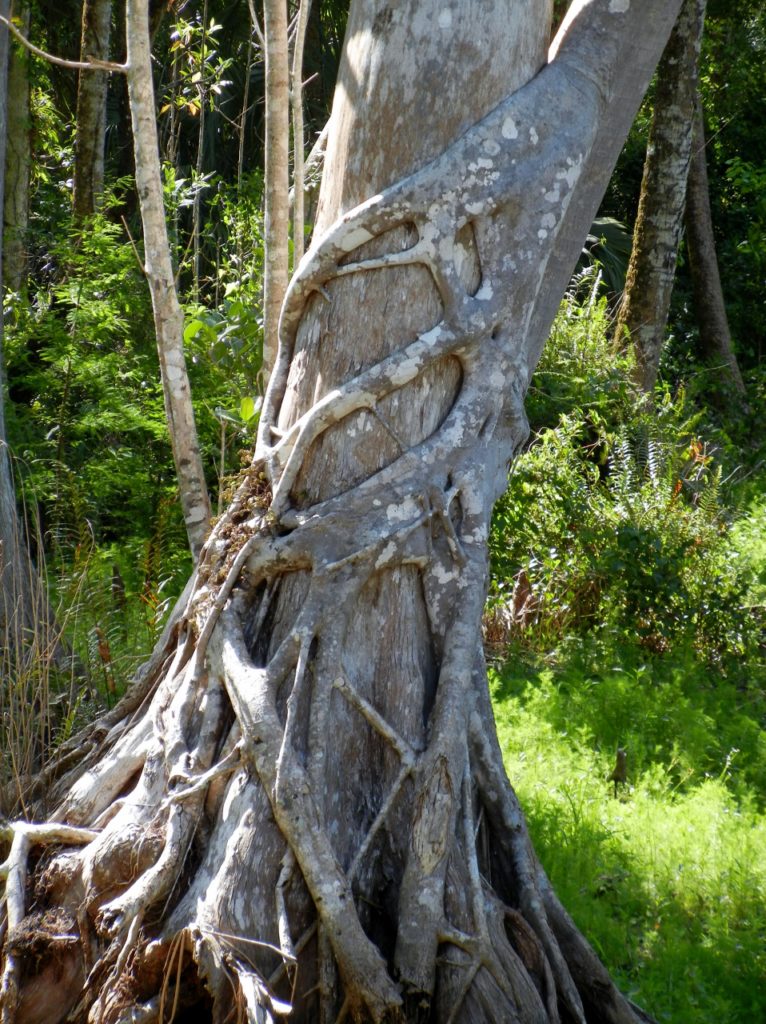
Strangler Fig
Ficus aurea
The Strangler or Golden Fig is one of my favorite South Florida trees. It grows to fifty feet or more tall and wide and is one of the best trees for birds to feed from.
The pea sized edible figs are produced several times a year and are a favorite for not only songbirds, but hummingbirds (which pick fruit flies off the tops of the rotting fruit) and squirrels.
The five inch oblong leaves are food for the larvae of the Ruddy Daggerwing Butterfly and other insects which birds feed to their young. Look for a striped caterpillar on the young leaves.
It will send down many aerial roots from its branches and takes up a lot of space. Don’t plant Strangler Fig too close to your house or especially near your septic drainage system or a pool.
The roots go down deep and anchor the plant during high winds. Some branches broke, but the trees stayed upright in our yard during hurricanes Frances, Jeanne and Wilma. Many of the shallow rooted exotic ficus fell over at this time revealing that their roots only went a few inches deep.
Although it seems that the roots of this epiphytic plant strangle the host, I have noticed that in most cases, the roots are a couple of inches away from the host’s trunk. Strangler Fig only rarely kills the host by shading it out.
I have seen Bald Cypress fight back by growing its trunk around the fig’s roots as if biting them. There is one like this at the start of the marsh trail at the A.R.M. Loxahatchee National Wildlife Refuge in Boynton Beach.
Along the Rafael Sanchez Trail on the east side of Lake Okeechobee there are old Bald Cypress whose trunks have continued to expand when circled by a large fig’s roots and broken the roots away.
Besides being found inland in swampy to dry soils, the Strangler Fig is also found in coastal hammocks. It is fairly tolerant of salt wind and occasional salt water flooding.
Lobate Lac Scale and Philephedra scale are two of the worst pests of Strangler fig and may cover the young branches. The tree will become black with sooty mold which is just moldy sugar water from the insects excretions. Often you can just wait until a natural predatory insect cleans up the infestation.
Mix Strangler Fig with other hammock species like Gumbo Limbo, Paradise Tree, Mastic, Pigeon Plum, Red Mulberry, Live Oak, Lancewood and Sabal Palms. Or for a swamp planting, try Hackberry, Bald Cypress, Sabal Palm, Florida Elm, Laurel Oak, Live Oak and Slash Pine.
The understory shrubs may include Wild Coffee, Marlberry, White Stopper, Dicliptera, Wild Plumbago, native ferns, Coastal Foxtail, Coontie and Snowberry.
Cedar Waxwings will flock to your Strangler Fig during spring migration and feast on the berries.